The young sculptor aims to fill in the gaps in the historical art stream and continues the tradition of modernist form-making, develops it, introducing new content and current problems. Using the versatility of the language of geometric shapes, volumes and different materials, the sculptor creates a clear symbolic series. In sharp and moving open volumes, a sense of the complex dynamics of the development of the modern world is recorded. Metal is one of the main materials with which Oleksii works. What is the role of metal in expressing the artist’s creative idea?
Why did you choose sculpture as an aesthetic expression?
Oleksii Zolotariov: It so happened that my family consists of artists: mother, stepfather and grandmother. When I was asked what I would like to do, the answer was sculpture. I graduated from the secondary art school of the CAS named after T.G. Shevchenko, then the academy, specialising in sculpture. When I graduated, I created my first metal sculpture. It was a little musician made of stone and bronze. Then there was a competition in Shulyavka. I took part in it and won. I got the opportunity to implement the “Suprematism Movement” project. Metal (8 mm steel) was selected as a material; it looked better than the other ones. Then I had other projects and different materials, but metal remained the main one in any of its forms: whether it is ferrous metal, corten or stainless steel, bronze or other alloys. And by the way, I use alloys quite often. So, I will have a project where aluminium will be used.
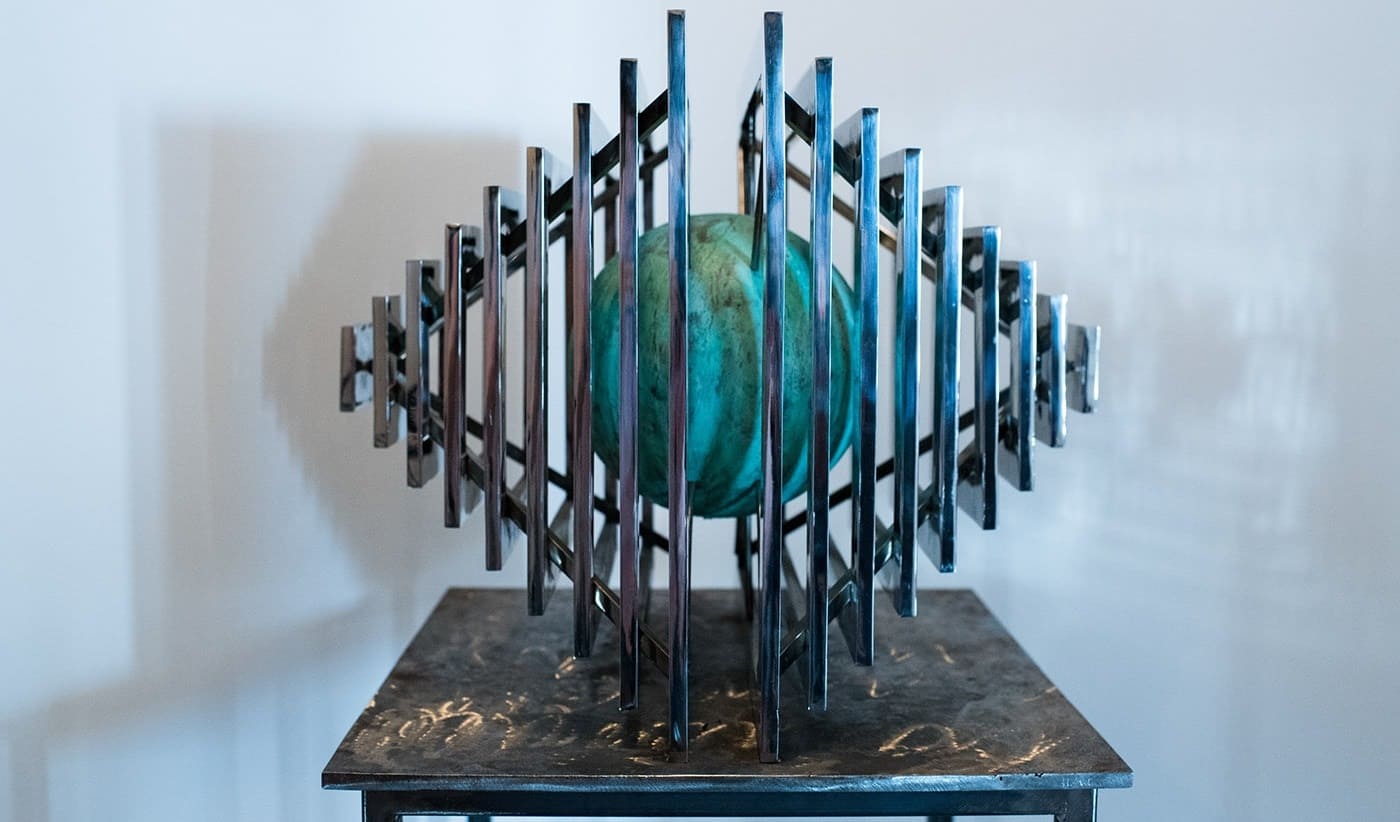
Time and space, stainless steel
Is the issue of material selection important for you?
Oleksii Zolotariov: Material is important in context, or in relation to a topic, to opportunities or to certain specifics. In any case, the idea is the basis of everything. The most important thing is what is created in the head.
As world practice shows, different things can be created from different materials. But, based on my experience, metal is used anyway. It has been used in art, probably since the time when people discovered it.
Large metal works are related to cooperation between people. I have my own time. These people, besides fulfilling my orders, often work with other artists and architects. For example, an artist has an idea, and he wants to realise it. He goes to a factory, but they simply do not understand him there. In this situation, we act as a link, we explain the idea of the artist. We can implement the project in the way that the artist wants, including various materials. It can be plastic, wood and metal. In the course of my professional life, I have gained experience using all the materials.
Of course, metal plays a huge role in the creative process – even if I create a clay sculpture, I make a metal frame, that is, metal – is a basis of sculpture. In any case, metal was one of the main materials. And even in stone dressing, metal is also used in this process. Anyhow, metal plays an important role in the sculptor’s life.
Please describe in greater detail the process of implementing your idea in metal.
Oleksii Zolotariov: Let’s take my “Confrontation” as an example. This sculpture is located on Bessarabskaya Square in Kyiv. By the way, internet users have begun to associate it with the coronavirus, and me too a little bit. It’s interesting.
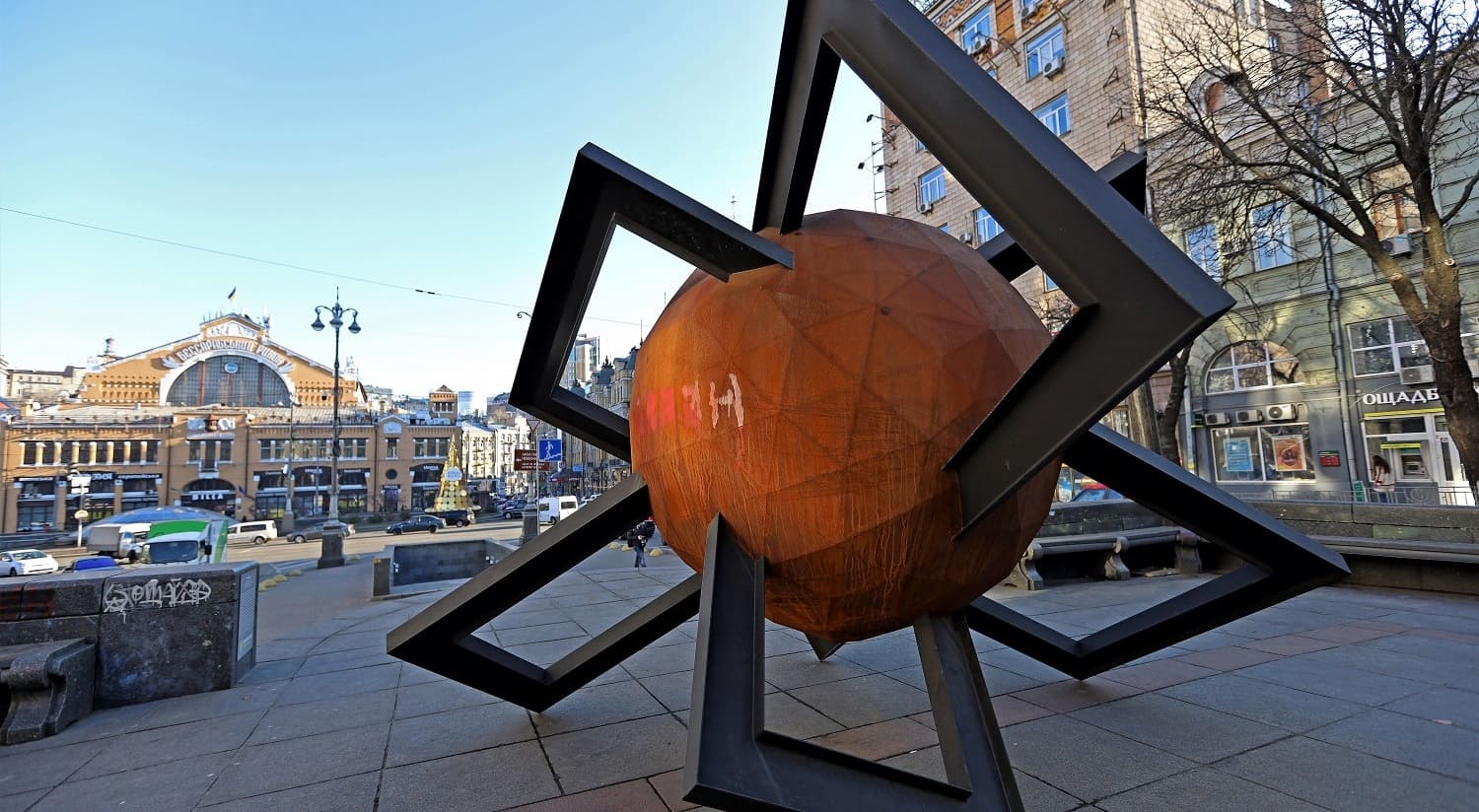
Confrontation, Corten steel
So how did it all start? A competition of the Ukrainian crisis media centre was announced. I took part in it and won. The idea of this work appeared in 2014, and the triptych “Mechanical Oranges” was created on this subject. And “Confrontation” became the fourth section of this cycle. So, I made a sketch. Then, together with architects, my colleagues, we created a computer model with the corresponding calculations and drawings. In addition to the 3D model for the competition, we created a model for printing. I printed another sketch at 1:10 scale, which simplifies the understanding of the object in terms of manufacturing. I purchased materials according to the design. Corten produced in Europe was used in the work. This material is the main one for architects and sculptors due to its properties, in particular, atmospheric resistance. Of course, there are certain alternatives that, for example, are used in shipbuilding. There is shipbuilding steel, but it has a different thickness, so it cannot always be used as an alternative. I-beams have also been used in this sculpture. The sculpture was created in our production facility together with my colleagues Vasiliy Grublyak and Evgeniy Nemov, with whom we have been creating various sculptures for more than 10 years. The transportation and installation of the sculpture is the final stage.
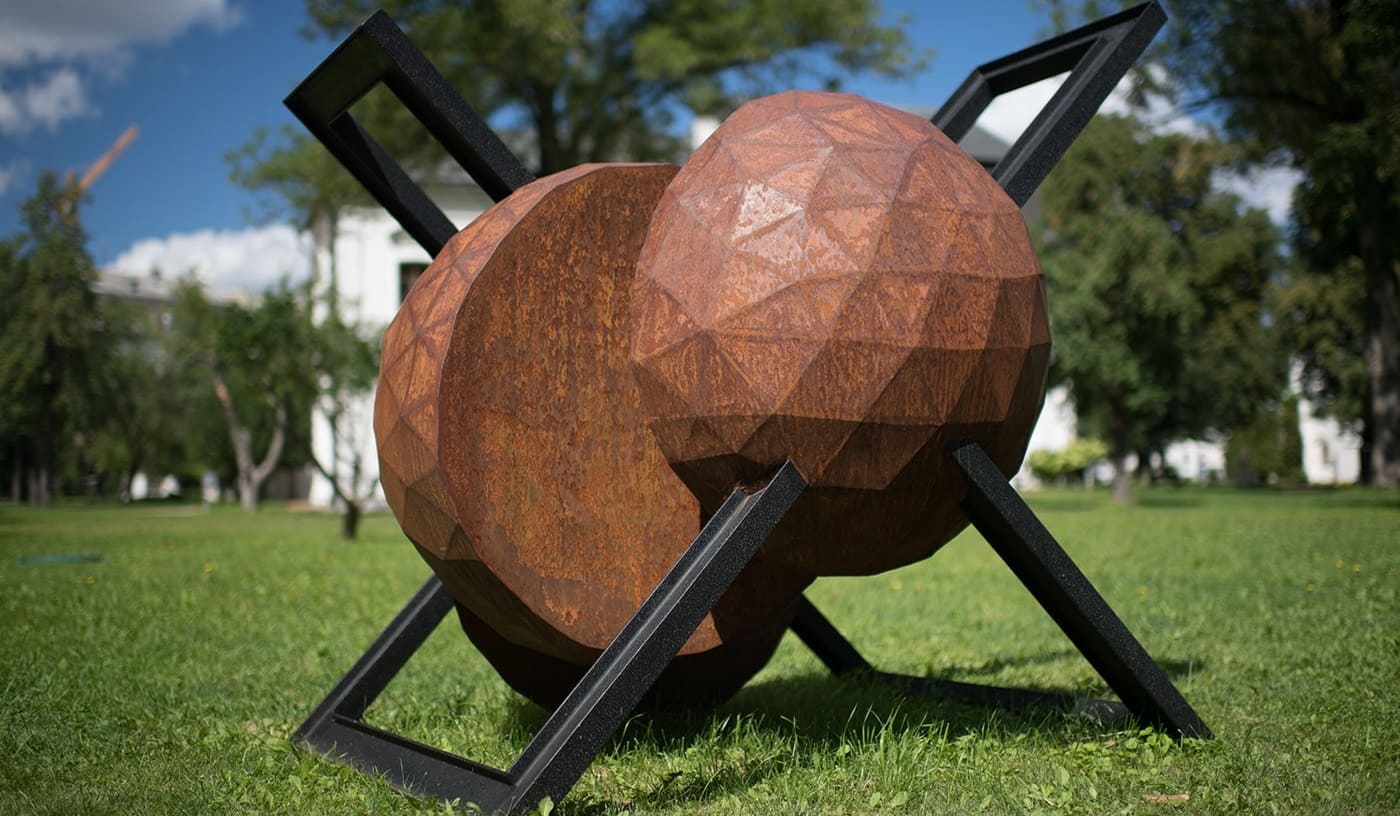
Mechanical Orange, Corten
Interestingly, the sculpture will travel when the coronavirus crisis is over. It will be presented in Odesa, then in Lviv and will remain in Mariupol permanently.
There are completely different processes for creating objects. For example, the “Ear” sculpture. It is made in two versions: in bronze and in corten. The bronze sculpture is experimental and its creation takes more time. With regards to the corten version, it was made traditionally according to the drawings by metal welding. Working with bronze is a more complicated process. First, the object is produced from clay, then from gypsum, then bronze casting. After this, the sculpture gets perfected, patinated.
There are sculptures that are very simple to create. For example, my relief sculptures. There is a set of specific materials; a sculpture is formed on a surface with sand, coal and metals, for example, aluminium and corten. All materials are mixed up, and such sculpture as “Low Altitude” is created. I am still working in this technique; I am creating two relief sculptures and one object from aluminium. These will be big figures. And each one is created in its own way.
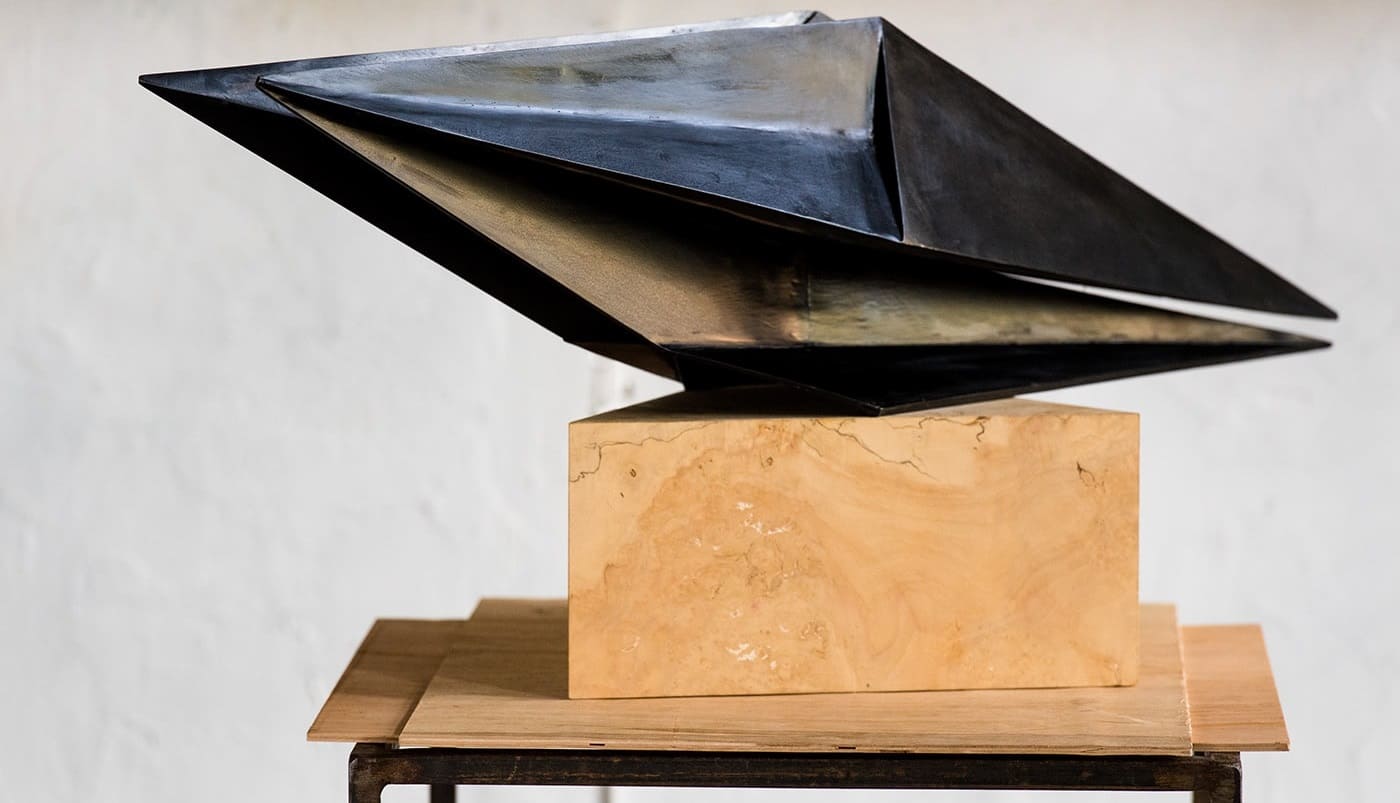
Bird, Galvanized Steel
Can an idea change when creating an object?
Oleksii Zolotariov: Yes, for example, “Confrontation” was created during the revolution in Ukraine in 2014, but I was only able to realise this idea in 2019. I had a clear idea – an anti-tank hedgehog with a sphere. From a formal point of view, this is a sphere and an anti-tank hedgehog, but from an emotional point of view, at that time it was a confrontation between people and authorities, truth and lies, a desire to move towards or away from Europe. That means, the process of creating an object was accompanied by certain thoughts. And today this object acquires a completely different emotional component. Actually, this is a confrontation between humanity and extracellular life forms that are trying to liquidate us (it’s about coronavirus). And here is my sculpture in front of me. I walk around it and think: “I didn’t think about it, but now this idea has occurred to me”. That’s a change of idea.
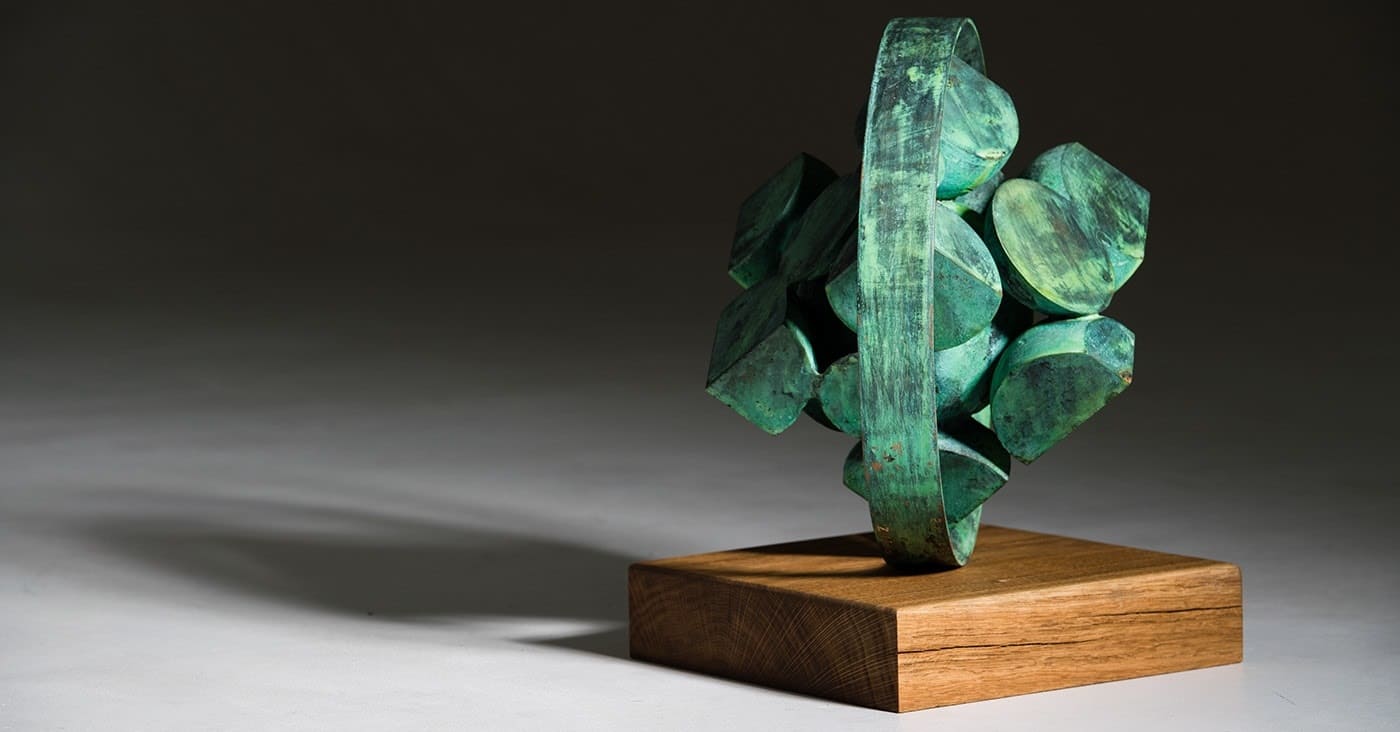
Molecule, bronze
Are there any difficulties while working with metal, and if so, how do you deal with them?
Oleksii Zolotariov: We also have some production capabilities in our studio, we often create both artworks and purely practical utilitarian things from different materials here. The material leaves a certain mark in the mind, and there is a wish to continue working with it. Such was the case with sand and aluminium. As for the difficulties, it’s hard for me to say something about this. I work with super professionals who do not give me the opportunity to feel the difficulties.
I remember we faced difficulties with welding when working with exposed-quality steel. To weld corten, a special type of wire is required, since ordinary wire is not quite suitable for this, because the seam will be covered with corrosion, but not the of the sort that is needed.
Is there any completely new material for you?
Oleksii Zolotariov: We worked with all materials in our studio of bulk materials. At the same time, we do not create large sculptures requiring anodised metal coating. An example of this technique is Jeff Koons’ balloon dogs. They are made of metal. The process is the following: the object is immersed in a bath and a certain composition is magnetised on it. This is in brief. To be honest, I don’t know the details of this technology, but the sculpture looks great. I am not talking about the artistic feature of this or that sculpture, but about the process itself. It is technically impossible to implement this in our conditions.
I would be interested in cooperation with a large production facility. When I won the competition in Dnipro, I had to create my sculpture at Yuzhmash. It was an interesting experiment, but the war began, and everything stopped. Perhaps my work is being performed by someone else. But in Western Ukraine, there will be a huge eight-meter metal “Ear”. The work is ongoing.
At the moment, a few objects are in progress that will become projects. In Kyiv, several presentations have also been planned. For summer, I planned to present one sculpture from corten – a geometric arch, but a large one. I made it in stone. And now I am making it larger and in corten.
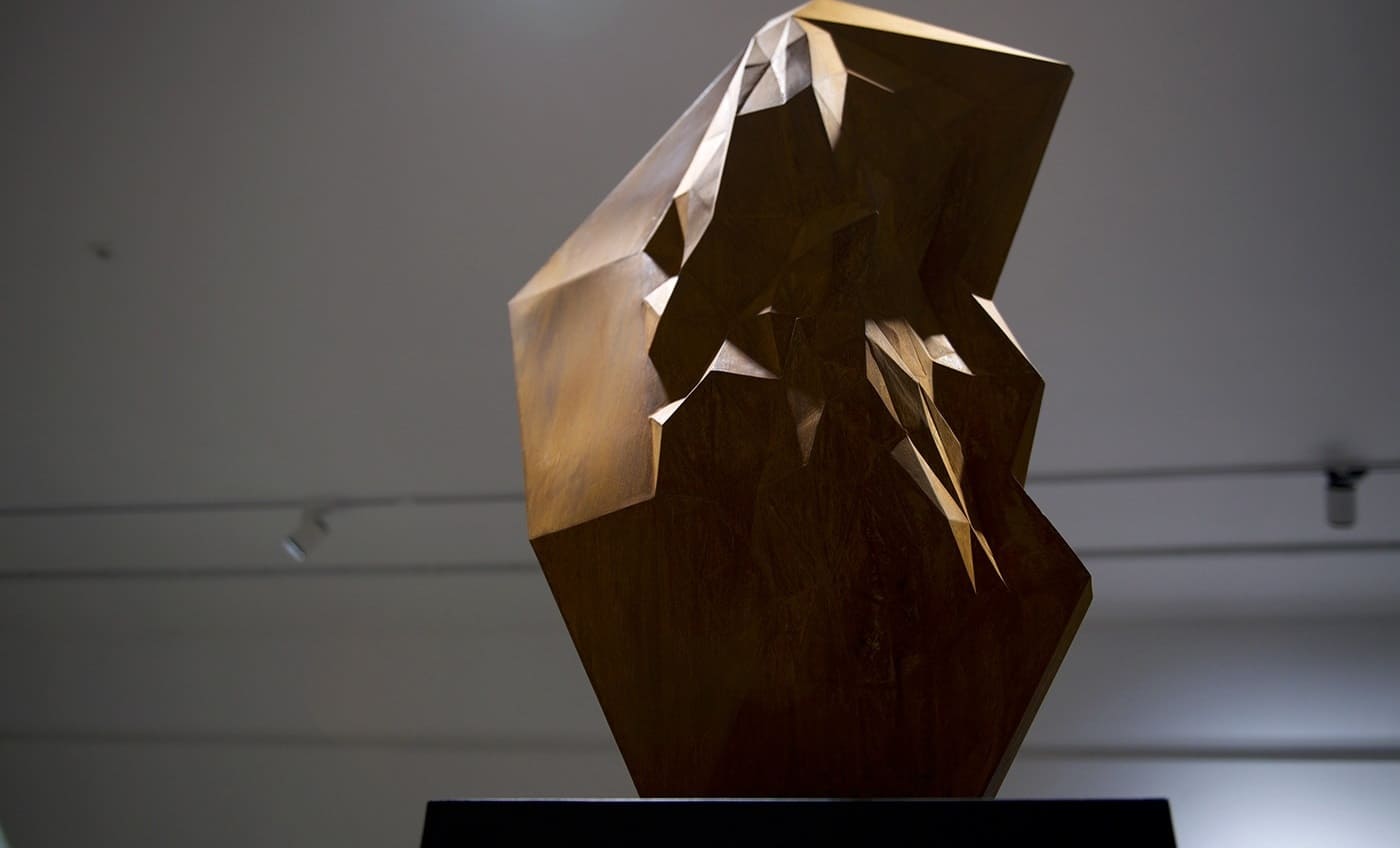
Ear, Corten steel
But if I dream for a while, then it would be interesting to search for something in biotechnologies. And I’ve recently become interested in this. Absolutely rare metals are also quite attractive to think about. Why not? For example, titanium is not bad.
A large sculpture is also interesting. For example, similar to our “Motherland Monument”. This is probably one of the largest sculptures in Ukraine. And in terms of implementation – this is an incredible project. At that time, it was space technology.
And therefore, it would be very good if large production companies were interested in art, if there were projects to collaborate with artists. For example, Viktor Pinchuk’s Interpipe. They built a new plant in Dnipro and invited Olafur Eliasson, a Danish-Icelandic artist. As a result of their cooperation, four huge art objects are presented on the territory of a modern technological plant, which one can view by booking a tour. This is an example of the interaction of production and art.
What does sculptor Oleksii Zolotariov dream of today?
Oleksii Zolotariov: Talking about dreams, I would like our people to become more interested in art. There are many young artists who need support, who create beautiful things. Art is a language, a tool for expressing one’s thoughts. Today, sculpture is not an order, it does not serve certain ideologies. It is a statement of the artist, which can be both circumspect and clear, as well as transformational. And this improves the level of our societal development. Our level of culture influences how the world communicates with us and the way in which we are perceived.
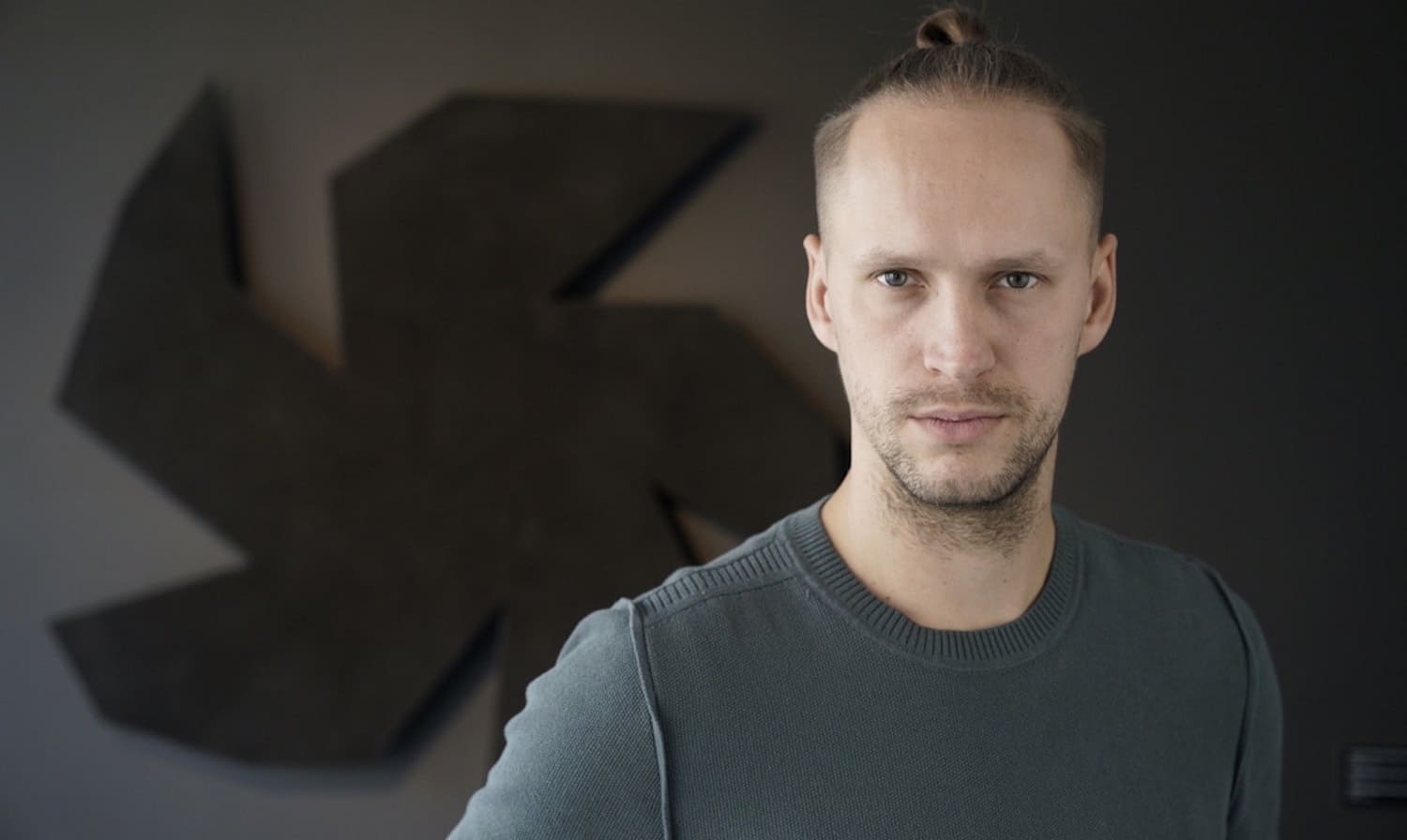
Together with my partners Vasiliy Hrublyak and Kateryna Rey, we founded a residence for sculptors, because I see a problem with sculptural development in Ukraine. And for me it is important to invite interesting artists and experts. It is a place where sculptors can work and have whatever supplies they need. And we did this at our own expense, without attracting sponsors and investors who would dictate their conditions to us. We just established a space where we like to create. Our website shares information about who has already visited us and who is planning to.
There are dreams and ideas about changing the state’s attitude towards art, and big business is interested in improving the cultural level of the nation. Summarising the above, we can say that being an artist means not only creating objects, but also making the most diverse contribution to the development of culture in the country.
Photos are provided by Oleksii Zolotariov.
